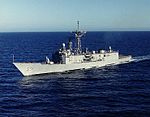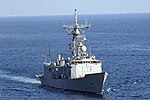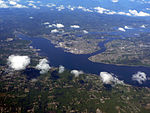Sinclair Inlet
Bodies of water of Kitsap County, WashingtonInlets of Washington (state)Kitsap County, Washington geography stubs

Sinclair Inlet is a shallow embayment in the western part of Puget Sound in Kitsap County, Washington, USA. It has a maximum depth of 20 meters. It is the southwestern extension of Port Orchard, and it touches the shores of three of Kitsap County's four incorporated cities: Bremerton, Bainbridge Island, and Port Orchard. It is connected to Dyes Inlet by the Port Washington Narrows and to Puget Sound by Rich Passage. It was named by United States Navy explorer Charles Wilkes for George T. Sinclair, acting master of one of his ship's crews. The Puget Sound Naval Shipyard is located on the north shore of Sinclair Inlet.
Excerpt from the Wikipedia article Sinclair Inlet (License: CC BY-SA 3.0, Authors, Images).Sinclair Inlet
Cambrian Avenue South, Bremerton
Geographical coordinates (GPS) Address Nearby Places Show on map
Geographical coordinates (GPS)
| Latitude | Longitude |
|---|---|
| N 47.546666666667 ° | E -122.65055555556 ° |
Address
Cambrian Avenue South
98314 Bremerton
Washington, United States
Open on Google Maps








